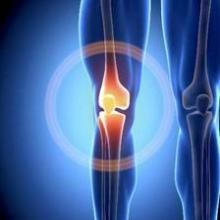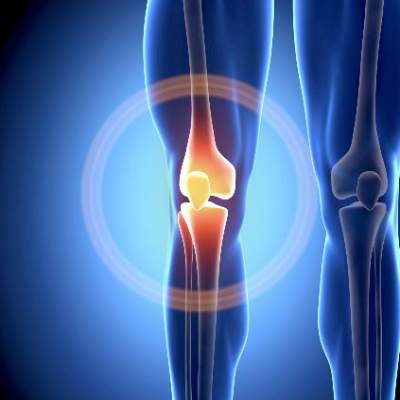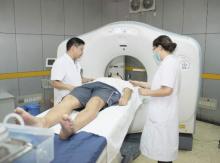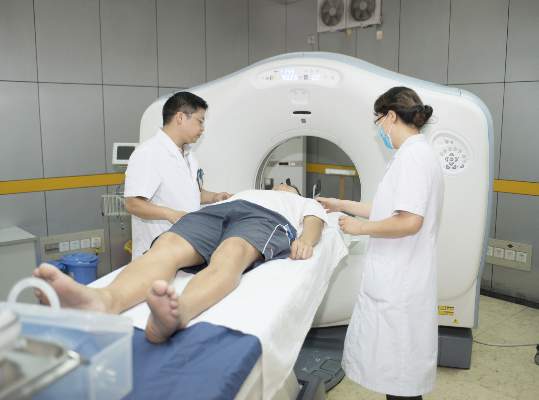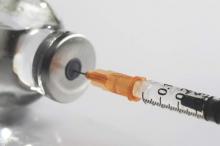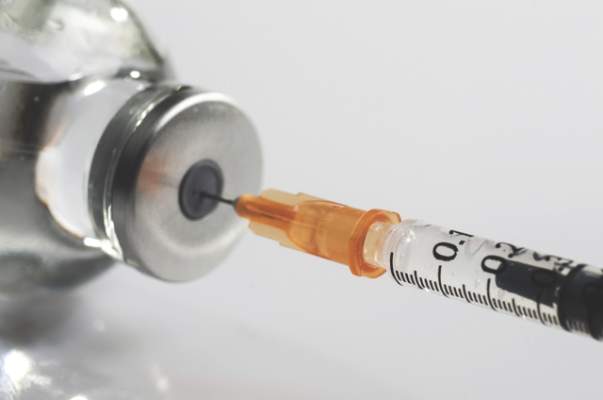User login
Evidence builds for lithium chloride’s ability to slow cartilage degradation
Treatment with lithium chloride (LiCl) inhibited the mechanical degradation of articular cartilage induced by the inflammatory cytokine interleukin 1-beta, and long-term exposure to LiCl did not appear to adversely affect joint health or induce arthritis in rats, according to research published in Journal of Orthopaedic Research.
In order to investigate the effect of LiCl on the biomechanical properties of healthy and interleukin 1-beta–treated cartilage, Dr. Clare Thompson of the Queen Mary University of London and her associates examined the effect of long-term dietary lithium on cartilage health in vivo (using a rat model and bovine cartilage explants) and in vitro (using human articular chondrocytes). They noted that chondrocyte viability, matrix catabolism, and the biomechanical properties of bovine cartilage explants treated with LiCl for 12 days were not significantly altered following treatment. In addition, long-term exposure (9 months) to dietary lithium did not induce osteoarthritis in rats, as determined by histological staining, while LiCl did not induce the expression of catabolic enzymes in human articular chondrocytes.
“This study suggests that, in addition to the treatment of bipolar disorder, lithium has the potential to reduce matrix catabolism in OA and the associated loss of mechanical functionality that occurs with disease progression. However, it must be emphasized that lithium is a powerful drug, the use of which must be carefully monitored in humans to prevent the development of negative side effects.”
Read the full article in the Journal of Orthopaedic Research (doi:10.1002/jor.22913).
Treatment with lithium chloride (LiCl) inhibited the mechanical degradation of articular cartilage induced by the inflammatory cytokine interleukin 1-beta, and long-term exposure to LiCl did not appear to adversely affect joint health or induce arthritis in rats, according to research published in Journal of Orthopaedic Research.
In order to investigate the effect of LiCl on the biomechanical properties of healthy and interleukin 1-beta–treated cartilage, Dr. Clare Thompson of the Queen Mary University of London and her associates examined the effect of long-term dietary lithium on cartilage health in vivo (using a rat model and bovine cartilage explants) and in vitro (using human articular chondrocytes). They noted that chondrocyte viability, matrix catabolism, and the biomechanical properties of bovine cartilage explants treated with LiCl for 12 days were not significantly altered following treatment. In addition, long-term exposure (9 months) to dietary lithium did not induce osteoarthritis in rats, as determined by histological staining, while LiCl did not induce the expression of catabolic enzymes in human articular chondrocytes.
“This study suggests that, in addition to the treatment of bipolar disorder, lithium has the potential to reduce matrix catabolism in OA and the associated loss of mechanical functionality that occurs with disease progression. However, it must be emphasized that lithium is a powerful drug, the use of which must be carefully monitored in humans to prevent the development of negative side effects.”
Read the full article in the Journal of Orthopaedic Research (doi:10.1002/jor.22913).
Treatment with lithium chloride (LiCl) inhibited the mechanical degradation of articular cartilage induced by the inflammatory cytokine interleukin 1-beta, and long-term exposure to LiCl did not appear to adversely affect joint health or induce arthritis in rats, according to research published in Journal of Orthopaedic Research.
In order to investigate the effect of LiCl on the biomechanical properties of healthy and interleukin 1-beta–treated cartilage, Dr. Clare Thompson of the Queen Mary University of London and her associates examined the effect of long-term dietary lithium on cartilage health in vivo (using a rat model and bovine cartilage explants) and in vitro (using human articular chondrocytes). They noted that chondrocyte viability, matrix catabolism, and the biomechanical properties of bovine cartilage explants treated with LiCl for 12 days were not significantly altered following treatment. In addition, long-term exposure (9 months) to dietary lithium did not induce osteoarthritis in rats, as determined by histological staining, while LiCl did not induce the expression of catabolic enzymes in human articular chondrocytes.
“This study suggests that, in addition to the treatment of bipolar disorder, lithium has the potential to reduce matrix catabolism in OA and the associated loss of mechanical functionality that occurs with disease progression. However, it must be emphasized that lithium is a powerful drug, the use of which must be carefully monitored in humans to prevent the development of negative side effects.”
Read the full article in the Journal of Orthopaedic Research (doi:10.1002/jor.22913).
ICM exposure associated with higher risk of thyroid dysfunction
After adjusting for variables, patients with iodinated contrast media (ICM) exposure had a significantly higher risk of thyroid dysfunction (hazard ratio, 1.46; 95% confidence interval, 1.29-1.66), compared with that of patients in the non-ICM exposure group, wrote the authors of a newly published study in the Journal of Clinical Endocrinology & Metabolism.
Lead author Dr. Edy Kornelius and associates examined 19,642 cases and 78,568 matched controls, recruited from the general population in Taiwan, in a 6-year cohort study. A total of 383 ICM-exposed patients had thyroid dysfunction (cumulative risk: 1.9%), compared with 1,252 patients without ICM exposure (cumulative risk: 1.5%). The number needed to harm (NNH) was 1 for every 250 people, the investigators noted.
In the subgroup analysis, the adjusted hazard ratios of hyperthyroidism and hypothyroidism were 1.22 (95% CI, 1.04-1.44) and 2.00 (95% CI, 1.65-2.44) when compared with controls. Patients with a higher Charlson’s Comorbidity Index were generally at a higher risk of thyroid dysfunction.
“In this study, we found a 22% increased risk of hyperthyroidism in ICM-exposed patients,” the authors wrote. “Although ICM-related imaging and interventional studies improve the disease diagnosis rate and quality of health, physicians should be aware of the complications of ICM and should apply it cautiously in clinical practice.”
For the full article, click here: J. Clin. Endocrinol. Metab. 2015 (doi:10.1210/JC.2015-2329).
After adjusting for variables, patients with iodinated contrast media (ICM) exposure had a significantly higher risk of thyroid dysfunction (hazard ratio, 1.46; 95% confidence interval, 1.29-1.66), compared with that of patients in the non-ICM exposure group, wrote the authors of a newly published study in the Journal of Clinical Endocrinology & Metabolism.
Lead author Dr. Edy Kornelius and associates examined 19,642 cases and 78,568 matched controls, recruited from the general population in Taiwan, in a 6-year cohort study. A total of 383 ICM-exposed patients had thyroid dysfunction (cumulative risk: 1.9%), compared with 1,252 patients without ICM exposure (cumulative risk: 1.5%). The number needed to harm (NNH) was 1 for every 250 people, the investigators noted.
In the subgroup analysis, the adjusted hazard ratios of hyperthyroidism and hypothyroidism were 1.22 (95% CI, 1.04-1.44) and 2.00 (95% CI, 1.65-2.44) when compared with controls. Patients with a higher Charlson’s Comorbidity Index were generally at a higher risk of thyroid dysfunction.
“In this study, we found a 22% increased risk of hyperthyroidism in ICM-exposed patients,” the authors wrote. “Although ICM-related imaging and interventional studies improve the disease diagnosis rate and quality of health, physicians should be aware of the complications of ICM and should apply it cautiously in clinical practice.”
For the full article, click here: J. Clin. Endocrinol. Metab. 2015 (doi:10.1210/JC.2015-2329).
After adjusting for variables, patients with iodinated contrast media (ICM) exposure had a significantly higher risk of thyroid dysfunction (hazard ratio, 1.46; 95% confidence interval, 1.29-1.66), compared with that of patients in the non-ICM exposure group, wrote the authors of a newly published study in the Journal of Clinical Endocrinology & Metabolism.
Lead author Dr. Edy Kornelius and associates examined 19,642 cases and 78,568 matched controls, recruited from the general population in Taiwan, in a 6-year cohort study. A total of 383 ICM-exposed patients had thyroid dysfunction (cumulative risk: 1.9%), compared with 1,252 patients without ICM exposure (cumulative risk: 1.5%). The number needed to harm (NNH) was 1 for every 250 people, the investigators noted.
In the subgroup analysis, the adjusted hazard ratios of hyperthyroidism and hypothyroidism were 1.22 (95% CI, 1.04-1.44) and 2.00 (95% CI, 1.65-2.44) when compared with controls. Patients with a higher Charlson’s Comorbidity Index were generally at a higher risk of thyroid dysfunction.
“In this study, we found a 22% increased risk of hyperthyroidism in ICM-exposed patients,” the authors wrote. “Although ICM-related imaging and interventional studies improve the disease diagnosis rate and quality of health, physicians should be aware of the complications of ICM and should apply it cautiously in clinical practice.”
For the full article, click here: J. Clin. Endocrinol. Metab. 2015 (doi:10.1210/JC.2015-2329).
Preterm birth rate continues to drop
For the 7th straight year, the rate of preterm births in the United States has decreased, with 11.4% of babies being born preterm in 2013, compared with 11.5% in 2012, according to a new federal report.
The report, America’s Children: Key National Indicators of Well-Being, 2015, was compiled by the Federal Interagency Forum on Child and Family Statistics, and includes participants from 23 federal agencies. The report attempts to quantify children’s well-being based on key indicators in seven domains: family and social environment, economic circumstances, health care, physical environment and safety, behavior, education, and health.
The percentage of preterm births – babies born before 37 weeks’ gestation – along with low-birth-weight infants had been rising for several decades, but the latest report shows progress in both areas. The preterm birth rate fell from a high of 12.8% in 2006 to 11.4% in 2013; the percentage of infants born with low birth weight (less than 5 pounds 8 ounces) was 8.0% in 2013, compared with 8.3% in 2006.
In addition, in 2013, the teen birth rate hit 12/1,000 adolescents aged 15-17 years, a record low, according to the report. In 2007, the teen birth rate was more than 40% higher at 22 births/1,000 adolescents.
But major depressive disorder among adolescents is on the rise, with 11% of youth aged 12-17 years experiencing a major depressive episode in 2013, compared with 9% in 2004. And only 38% of young adults in 2013 received treatment for such an episode, compared to 40% in 2004.
For the 7th straight year, the rate of preterm births in the United States has decreased, with 11.4% of babies being born preterm in 2013, compared with 11.5% in 2012, according to a new federal report.
The report, America’s Children: Key National Indicators of Well-Being, 2015, was compiled by the Federal Interagency Forum on Child and Family Statistics, and includes participants from 23 federal agencies. The report attempts to quantify children’s well-being based on key indicators in seven domains: family and social environment, economic circumstances, health care, physical environment and safety, behavior, education, and health.
The percentage of preterm births – babies born before 37 weeks’ gestation – along with low-birth-weight infants had been rising for several decades, but the latest report shows progress in both areas. The preterm birth rate fell from a high of 12.8% in 2006 to 11.4% in 2013; the percentage of infants born with low birth weight (less than 5 pounds 8 ounces) was 8.0% in 2013, compared with 8.3% in 2006.
In addition, in 2013, the teen birth rate hit 12/1,000 adolescents aged 15-17 years, a record low, according to the report. In 2007, the teen birth rate was more than 40% higher at 22 births/1,000 adolescents.
But major depressive disorder among adolescents is on the rise, with 11% of youth aged 12-17 years experiencing a major depressive episode in 2013, compared with 9% in 2004. And only 38% of young adults in 2013 received treatment for such an episode, compared to 40% in 2004.
For the 7th straight year, the rate of preterm births in the United States has decreased, with 11.4% of babies being born preterm in 2013, compared with 11.5% in 2012, according to a new federal report.
The report, America’s Children: Key National Indicators of Well-Being, 2015, was compiled by the Federal Interagency Forum on Child and Family Statistics, and includes participants from 23 federal agencies. The report attempts to quantify children’s well-being based on key indicators in seven domains: family and social environment, economic circumstances, health care, physical environment and safety, behavior, education, and health.
The percentage of preterm births – babies born before 37 weeks’ gestation – along with low-birth-weight infants had been rising for several decades, but the latest report shows progress in both areas. The preterm birth rate fell from a high of 12.8% in 2006 to 11.4% in 2013; the percentage of infants born with low birth weight (less than 5 pounds 8 ounces) was 8.0% in 2013, compared with 8.3% in 2006.
In addition, in 2013, the teen birth rate hit 12/1,000 adolescents aged 15-17 years, a record low, according to the report. In 2007, the teen birth rate was more than 40% higher at 22 births/1,000 adolescents.
But major depressive disorder among adolescents is on the rise, with 11% of youth aged 12-17 years experiencing a major depressive episode in 2013, compared with 9% in 2004. And only 38% of young adults in 2013 received treatment for such an episode, compared to 40% in 2004.
Seasonal change does not affect vitamin D levels in primary hyperparathyroidism
In an outpatient study, seasonal variability did not have a significant effect on 25-hydroxy vitamin D and parathyroid hormone levels in patients with mild primary hyperparathyroidism, likely because of widespread high vitamin D supplement intake, according to research in the Journal of Clinical Endocrinology and Metabolism.
The study involved 100 people with primary hyperparathyroidism (PHPT) from the New York area who were enrolled between December 2010 and February 2014. The researchers defined vitamin D deficiency as a 25-OH vitamin D level <20 ng/mL, and vitamin D deficiency or insufficiency as a 25-OH vitamin D level <30 ng/mL, depending on the season of enrollment. The mean vitamin D intake among the participants was 1,493 ± 1,574 IU daily between diet and supplementary sources. Nearly two-thirds (65%) of participants took vitamin D supplements, according to Dr. Elaine Cong and her associates at Columbia University in New York (J. Clin. Endocrinol. Metab. [doi:10.1210/JC.2015-2105]).
Although they documented the to-be-expected seasonal differences in sun exposure, the researchers found no significant seasonal differences in levels of 25-OH vitamin D, parathyroid hormone, markers of bone turnover, or bone mineral density, or in the prevalence of 25 OH vitamin D <20 or <30 ng/mL. While supplement users had markedly better vitamin D status than nonusers (25-OH vitamin D <20 ng/mL: 8% vs. 40%, P <.0001; <30 ng/mL: 40% vs. 80%, P = .0001; ≥30 ng/mL: 60% vs. 20%, P = .0001), the researchers noted that even nonsupplement users received vitamin D through dietary means, although the nonsupplement group was more likely to be either deficient or insufficient in vitamin D.
Patients “with PHPT in the New York City metropolitan area are following secular trends and increasing their vitamin D supplement use. Most were taking over-the-counter vitamins, and it is clearly advisable for physicians who care for PHPT patients to specifically query about supplement use,” the investigators wrote.
The investigators had no relevant financial disclosures to report.
In an outpatient study, seasonal variability did not have a significant effect on 25-hydroxy vitamin D and parathyroid hormone levels in patients with mild primary hyperparathyroidism, likely because of widespread high vitamin D supplement intake, according to research in the Journal of Clinical Endocrinology and Metabolism.
The study involved 100 people with primary hyperparathyroidism (PHPT) from the New York area who were enrolled between December 2010 and February 2014. The researchers defined vitamin D deficiency as a 25-OH vitamin D level <20 ng/mL, and vitamin D deficiency or insufficiency as a 25-OH vitamin D level <30 ng/mL, depending on the season of enrollment. The mean vitamin D intake among the participants was 1,493 ± 1,574 IU daily between diet and supplementary sources. Nearly two-thirds (65%) of participants took vitamin D supplements, according to Dr. Elaine Cong and her associates at Columbia University in New York (J. Clin. Endocrinol. Metab. [doi:10.1210/JC.2015-2105]).
Although they documented the to-be-expected seasonal differences in sun exposure, the researchers found no significant seasonal differences in levels of 25-OH vitamin D, parathyroid hormone, markers of bone turnover, or bone mineral density, or in the prevalence of 25 OH vitamin D <20 or <30 ng/mL. While supplement users had markedly better vitamin D status than nonusers (25-OH vitamin D <20 ng/mL: 8% vs. 40%, P <.0001; <30 ng/mL: 40% vs. 80%, P = .0001; ≥30 ng/mL: 60% vs. 20%, P = .0001), the researchers noted that even nonsupplement users received vitamin D through dietary means, although the nonsupplement group was more likely to be either deficient or insufficient in vitamin D.
Patients “with PHPT in the New York City metropolitan area are following secular trends and increasing their vitamin D supplement use. Most were taking over-the-counter vitamins, and it is clearly advisable for physicians who care for PHPT patients to specifically query about supplement use,” the investigators wrote.
The investigators had no relevant financial disclosures to report.
In an outpatient study, seasonal variability did not have a significant effect on 25-hydroxy vitamin D and parathyroid hormone levels in patients with mild primary hyperparathyroidism, likely because of widespread high vitamin D supplement intake, according to research in the Journal of Clinical Endocrinology and Metabolism.
The study involved 100 people with primary hyperparathyroidism (PHPT) from the New York area who were enrolled between December 2010 and February 2014. The researchers defined vitamin D deficiency as a 25-OH vitamin D level <20 ng/mL, and vitamin D deficiency or insufficiency as a 25-OH vitamin D level <30 ng/mL, depending on the season of enrollment. The mean vitamin D intake among the participants was 1,493 ± 1,574 IU daily between diet and supplementary sources. Nearly two-thirds (65%) of participants took vitamin D supplements, according to Dr. Elaine Cong and her associates at Columbia University in New York (J. Clin. Endocrinol. Metab. [doi:10.1210/JC.2015-2105]).
Although they documented the to-be-expected seasonal differences in sun exposure, the researchers found no significant seasonal differences in levels of 25-OH vitamin D, parathyroid hormone, markers of bone turnover, or bone mineral density, or in the prevalence of 25 OH vitamin D <20 or <30 ng/mL. While supplement users had markedly better vitamin D status than nonusers (25-OH vitamin D <20 ng/mL: 8% vs. 40%, P <.0001; <30 ng/mL: 40% vs. 80%, P = .0001; ≥30 ng/mL: 60% vs. 20%, P = .0001), the researchers noted that even nonsupplement users received vitamin D through dietary means, although the nonsupplement group was more likely to be either deficient or insufficient in vitamin D.
Patients “with PHPT in the New York City metropolitan area are following secular trends and increasing their vitamin D supplement use. Most were taking over-the-counter vitamins, and it is clearly advisable for physicians who care for PHPT patients to specifically query about supplement use,” the investigators wrote.
The investigators had no relevant financial disclosures to report.
FROM THE JOURNAL OF CLINICAL ENDOCRINOLOGY AND METABOLISM
Key clinical point: Supplemental vitamin D helps maintain normal bone levels in patients with primary hyperparathyroidism.
Major finding: There was no seasonal variation of disease severity, but PHPT patients who took supplemental vitamin D had higher 25-OH vitamin D levels and a lower prevalence of 25-OH vitamin D <20 and <30 ng/mL, compared with their peers.
Data source: A cross-sectional study of 100 patients with primary hyperparathyroidism.
Disclosures: The investigators had no relevant financial disclosures to report.
Heroin use up across demographic groups from 2002 to 2013
Heroin use is rising across all demographic groups in the United States, and is gaining traction among groups that previously have been associated with lower use, doubling among women and more than doubling among non-Hispanic whites, Dr. Thomas Frieden, director of the Centers for Disease Control and Prevention, said in a July 7 telebriefing.
Between 2002 and 2013, the rate of heroin-related overdose deaths nearly quadrupled, and more than 8,200 people died in 2013, according to the latest Vital Signs report, a combined project from the CDC and the Food and Drug Administration that analyzed data from the 2002-2013 National Survey on Drug Use and Health.
In addition, the gaps between men and women, low and higher incomes, and people with Medicaid and private insurance have narrowed in the past decade, although the most at-risk groups are still non-Hispanic whites, men, 18- to 25-year-olds, people with an annual household incomes of less than $20,000, Medicaid recipients, and the uninsured.
Although people who are addicted to prescription opioid painkillers were 40 times more likely to abuse heroin, the general idea that people gravitating to heroin abuse are doing so because opiates have become harder to get is not true, Dr. Frieden noted. The study identified two factors that were likely responsible for the increase in heroin users – the combination of the increased supply of heroin and higher demand, as well as the number of people already addicted to opioids who are “primed” for a heroin addiction.
However, state agencies have a central role to play in curbing heroin abuse, and will need to increase support for drug monitoring and surveillance programs to make tracking opiate abusers easier and more efficient, Dr. Frieden said.
The CDC is addressing the epidemic by helping to create federal guidelines for pain management, and supporting research and development for less addictive pain medications, he said.
“Improving prescribing practices is part of the solution, not part of the cause,” Dr. Frieden said.
Individual health care providers can help by following best practices for responsible painkiller prescribing to reduce opioid painkiller addiction, and by providing training for ways to adequately and comprehensively address pain beyond simply prescribing painkillers.
“Opiates are very good at curbing severe pain ... But for chronic, noncancer pain, you really need to look at the risks and benefits,” said Christopher M. Jones, Pharm.D., the study’s coauthor and a senior adviser at the FDA.
Heroin use is rising across all demographic groups in the United States, and is gaining traction among groups that previously have been associated with lower use, doubling among women and more than doubling among non-Hispanic whites, Dr. Thomas Frieden, director of the Centers for Disease Control and Prevention, said in a July 7 telebriefing.
Between 2002 and 2013, the rate of heroin-related overdose deaths nearly quadrupled, and more than 8,200 people died in 2013, according to the latest Vital Signs report, a combined project from the CDC and the Food and Drug Administration that analyzed data from the 2002-2013 National Survey on Drug Use and Health.
In addition, the gaps between men and women, low and higher incomes, and people with Medicaid and private insurance have narrowed in the past decade, although the most at-risk groups are still non-Hispanic whites, men, 18- to 25-year-olds, people with an annual household incomes of less than $20,000, Medicaid recipients, and the uninsured.
Although people who are addicted to prescription opioid painkillers were 40 times more likely to abuse heroin, the general idea that people gravitating to heroin abuse are doing so because opiates have become harder to get is not true, Dr. Frieden noted. The study identified two factors that were likely responsible for the increase in heroin users – the combination of the increased supply of heroin and higher demand, as well as the number of people already addicted to opioids who are “primed” for a heroin addiction.
However, state agencies have a central role to play in curbing heroin abuse, and will need to increase support for drug monitoring and surveillance programs to make tracking opiate abusers easier and more efficient, Dr. Frieden said.
The CDC is addressing the epidemic by helping to create federal guidelines for pain management, and supporting research and development for less addictive pain medications, he said.
“Improving prescribing practices is part of the solution, not part of the cause,” Dr. Frieden said.
Individual health care providers can help by following best practices for responsible painkiller prescribing to reduce opioid painkiller addiction, and by providing training for ways to adequately and comprehensively address pain beyond simply prescribing painkillers.
“Opiates are very good at curbing severe pain ... But for chronic, noncancer pain, you really need to look at the risks and benefits,” said Christopher M. Jones, Pharm.D., the study’s coauthor and a senior adviser at the FDA.
Heroin use is rising across all demographic groups in the United States, and is gaining traction among groups that previously have been associated with lower use, doubling among women and more than doubling among non-Hispanic whites, Dr. Thomas Frieden, director of the Centers for Disease Control and Prevention, said in a July 7 telebriefing.
Between 2002 and 2013, the rate of heroin-related overdose deaths nearly quadrupled, and more than 8,200 people died in 2013, according to the latest Vital Signs report, a combined project from the CDC and the Food and Drug Administration that analyzed data from the 2002-2013 National Survey on Drug Use and Health.
In addition, the gaps between men and women, low and higher incomes, and people with Medicaid and private insurance have narrowed in the past decade, although the most at-risk groups are still non-Hispanic whites, men, 18- to 25-year-olds, people with an annual household incomes of less than $20,000, Medicaid recipients, and the uninsured.
Although people who are addicted to prescription opioid painkillers were 40 times more likely to abuse heroin, the general idea that people gravitating to heroin abuse are doing so because opiates have become harder to get is not true, Dr. Frieden noted. The study identified two factors that were likely responsible for the increase in heroin users – the combination of the increased supply of heroin and higher demand, as well as the number of people already addicted to opioids who are “primed” for a heroin addiction.
However, state agencies have a central role to play in curbing heroin abuse, and will need to increase support for drug monitoring and surveillance programs to make tracking opiate abusers easier and more efficient, Dr. Frieden said.
The CDC is addressing the epidemic by helping to create federal guidelines for pain management, and supporting research and development for less addictive pain medications, he said.
“Improving prescribing practices is part of the solution, not part of the cause,” Dr. Frieden said.
Individual health care providers can help by following best practices for responsible painkiller prescribing to reduce opioid painkiller addiction, and by providing training for ways to adequately and comprehensively address pain beyond simply prescribing painkillers.
“Opiates are very good at curbing severe pain ... But for chronic, noncancer pain, you really need to look at the risks and benefits,” said Christopher M. Jones, Pharm.D., the study’s coauthor and a senior adviser at the FDA.
FROM A CDC TELEBRIEFING
ACOG adds HPV-9 to vaccination advice
The American College of Obstetricians and Gynecologists continues to urge routine vaccination against human papillomavirus for girls and boys and has now added the recently licensed 9-valent HPV vaccine to its recommendation.
The updated policy statement from ACOG’s Committee on Adolescent Health Care and the Immunization Expert Work Group suggest starting vaccination as part of the adolescent immunization platform, but patients who were not vaccinated in the target age can receive the vaccine through age 26 years. The new policy statement adds the 9-valent HPV vaccine (Gardasil 9), which is recommended by the Advisory Committee on Immunization Practices and was licensed by the Food and Drug Administration in December 2014 for girls and boys aged 11-12 years.
“Although obstetrician-gynecologists are not likely to care for many patients in the initial HPV vaccination target group, they have the opportunity to educate mothers about the importance of vaccinating their children at the recommended age,” the committee members wrote in the updated policy statement. “Furthermore, obstetrician-gynecologists and play a critical role in vaccinating adolescent girls and young women during the catch-up period.”
They noted in the policy statement that vaccination is not associated with an earlier onset of sexual activity or increased incidence of sexually transmitted infections.
Vaccination is recommended even if the results of HPV DNA testing are positive. Revaccination is not routinely recommended for individuals who completed the three-dose series with the quadrivalent HPV vaccine or the bivalent HPV vaccine, the committee noted.
HPV vaccination is not recommended during pregnancy, but routine pregnancy testing is not recommended before vaccination. Safety data on inadvertent vaccine administration during pregnancy are “reassuring,” according to ACOG.
For the complete recommendation, visit here.
The American College of Obstetricians and Gynecologists continues to urge routine vaccination against human papillomavirus for girls and boys and has now added the recently licensed 9-valent HPV vaccine to its recommendation.
The updated policy statement from ACOG’s Committee on Adolescent Health Care and the Immunization Expert Work Group suggest starting vaccination as part of the adolescent immunization platform, but patients who were not vaccinated in the target age can receive the vaccine through age 26 years. The new policy statement adds the 9-valent HPV vaccine (Gardasil 9), which is recommended by the Advisory Committee on Immunization Practices and was licensed by the Food and Drug Administration in December 2014 for girls and boys aged 11-12 years.
“Although obstetrician-gynecologists are not likely to care for many patients in the initial HPV vaccination target group, they have the opportunity to educate mothers about the importance of vaccinating their children at the recommended age,” the committee members wrote in the updated policy statement. “Furthermore, obstetrician-gynecologists and play a critical role in vaccinating adolescent girls and young women during the catch-up period.”
They noted in the policy statement that vaccination is not associated with an earlier onset of sexual activity or increased incidence of sexually transmitted infections.
Vaccination is recommended even if the results of HPV DNA testing are positive. Revaccination is not routinely recommended for individuals who completed the three-dose series with the quadrivalent HPV vaccine or the bivalent HPV vaccine, the committee noted.
HPV vaccination is not recommended during pregnancy, but routine pregnancy testing is not recommended before vaccination. Safety data on inadvertent vaccine administration during pregnancy are “reassuring,” according to ACOG.
For the complete recommendation, visit here.
The American College of Obstetricians and Gynecologists continues to urge routine vaccination against human papillomavirus for girls and boys and has now added the recently licensed 9-valent HPV vaccine to its recommendation.
The updated policy statement from ACOG’s Committee on Adolescent Health Care and the Immunization Expert Work Group suggest starting vaccination as part of the adolescent immunization platform, but patients who were not vaccinated in the target age can receive the vaccine through age 26 years. The new policy statement adds the 9-valent HPV vaccine (Gardasil 9), which is recommended by the Advisory Committee on Immunization Practices and was licensed by the Food and Drug Administration in December 2014 for girls and boys aged 11-12 years.
“Although obstetrician-gynecologists are not likely to care for many patients in the initial HPV vaccination target group, they have the opportunity to educate mothers about the importance of vaccinating their children at the recommended age,” the committee members wrote in the updated policy statement. “Furthermore, obstetrician-gynecologists and play a critical role in vaccinating adolescent girls and young women during the catch-up period.”
They noted in the policy statement that vaccination is not associated with an earlier onset of sexual activity or increased incidence of sexually transmitted infections.
Vaccination is recommended even if the results of HPV DNA testing are positive. Revaccination is not routinely recommended for individuals who completed the three-dose series with the quadrivalent HPV vaccine or the bivalent HPV vaccine, the committee noted.
HPV vaccination is not recommended during pregnancy, but routine pregnancy testing is not recommended before vaccination. Safety data on inadvertent vaccine administration during pregnancy are “reassuring,” according to ACOG.
For the complete recommendation, visit here.
Testosterone’s effect on amygdala linked to social threat approach
Increased amygdala activity after testosterone administration is bound to social threat approach, not social threat avoidance, a newly published research article shows.
Sina Radke, Ph.D., of Radboud University Nijmegen in the Netherlands and associates enrolled 54 female volunteers aged 18 to 30 in a double-blind, randomized, placebo-controlled study. The participants received either a single dose of 0.5 mg of testosterone (n = 26) or a matched placebo (n = 28), then completed a task where they were shown visually presented emotional facial expressions, and responded by either pulling a joystick toward their bodies (approach movement) or pushing it away from their bodies (avoidance movement).
Compared to placebo, testosterone administration increased left amygdala activity during approach trials at trend level (P = 0.10), and decreased it during avoidance trials (P = 0.01). In addition, left amygdala activity significantly differed between approach and avoidance of angry faces after testosterone administration (P = 0.034) but not after placebo (P = 0.23).
“By differentiating between approach and avoidance, we showed that testosterone modulates amygdala reactivity according to current motivational demands and not according to the emotional or action context per se,” the authors wrote. “This motivation-specific mechanism converges with approach-enhancing effects of testosterone observed during social challenges.”
Read the entire article here: Sci. Adv. 2015 (doi: 10.1126/sciadv.1400074)
Increased amygdala activity after testosterone administration is bound to social threat approach, not social threat avoidance, a newly published research article shows.
Sina Radke, Ph.D., of Radboud University Nijmegen in the Netherlands and associates enrolled 54 female volunteers aged 18 to 30 in a double-blind, randomized, placebo-controlled study. The participants received either a single dose of 0.5 mg of testosterone (n = 26) or a matched placebo (n = 28), then completed a task where they were shown visually presented emotional facial expressions, and responded by either pulling a joystick toward their bodies (approach movement) or pushing it away from their bodies (avoidance movement).
Compared to placebo, testosterone administration increased left amygdala activity during approach trials at trend level (P = 0.10), and decreased it during avoidance trials (P = 0.01). In addition, left amygdala activity significantly differed between approach and avoidance of angry faces after testosterone administration (P = 0.034) but not after placebo (P = 0.23).
“By differentiating between approach and avoidance, we showed that testosterone modulates amygdala reactivity according to current motivational demands and not according to the emotional or action context per se,” the authors wrote. “This motivation-specific mechanism converges with approach-enhancing effects of testosterone observed during social challenges.”
Read the entire article here: Sci. Adv. 2015 (doi: 10.1126/sciadv.1400074)
Increased amygdala activity after testosterone administration is bound to social threat approach, not social threat avoidance, a newly published research article shows.
Sina Radke, Ph.D., of Radboud University Nijmegen in the Netherlands and associates enrolled 54 female volunteers aged 18 to 30 in a double-blind, randomized, placebo-controlled study. The participants received either a single dose of 0.5 mg of testosterone (n = 26) or a matched placebo (n = 28), then completed a task where they were shown visually presented emotional facial expressions, and responded by either pulling a joystick toward their bodies (approach movement) or pushing it away from their bodies (avoidance movement).
Compared to placebo, testosterone administration increased left amygdala activity during approach trials at trend level (P = 0.10), and decreased it during avoidance trials (P = 0.01). In addition, left amygdala activity significantly differed between approach and avoidance of angry faces after testosterone administration (P = 0.034) but not after placebo (P = 0.23).
“By differentiating between approach and avoidance, we showed that testosterone modulates amygdala reactivity according to current motivational demands and not according to the emotional or action context per se,” the authors wrote. “This motivation-specific mechanism converges with approach-enhancing effects of testosterone observed during social challenges.”
Read the entire article here: Sci. Adv. 2015 (doi: 10.1126/sciadv.1400074)
FROM SCIENCE ADVANCES
Earlier start to plasma transfusions for persistent postpartum hemorrhage does not improve maternal outcomes
TORONTO – For women with persistent postpartum hemorrhage, correction of coagulopathy by administering plasma is often an inevitable treatment decision. There are little clinical data, however, on whether an early or a late start for plasma transfusion leads to more positive maternal outcomes.
Data presented on Wednesday at the ISTH 2015 Congress by Dr. Dacia Henriquez of the department of obstetrics and gynecology at Leiden (the Netherlands) University Medical Center, may help answer that question.
“Our findings do not support the notion that plasma transfusion within 60 minutes after diagnosing persistent postpartum hemorrhage contributes to the reduction of the risk of adverse maternal outcomes,” Dr. Henriquez said in an interview.
The TeMpOh-1 (Transfusion Strategies in Women with Major Obstetric Hemorrhage) study included 1,217 women with postpartum hemorrhage (PPH) that was refractory to first-line obstetric interventions. The women were treated at 61 Dutch hospitals in 2011 and 2012.
“With this selection, our study results can be easily translated to daily clinical practice because of this clearly identifiable turning-point in treatment,” she said.
All women included in the study received either at least four units of red blood cells or a multicomponent transfusion within 24 hours after delivery (≥ 1000 mL). Median bleeding rate at baseline was 1.1 L at 1 hour, and median total blood loss was 3.0 L. Marginal structural models with inverse probability of treatment weighting were constructed to quantify the difference in maternal outcomes – including arterial embolism, hysterectomy, and maternal mortality – between an early (within 60 minutes) and a late (after 60 minutes) start of plasma transfusion (163 women vs. 1,054 women, respectively).
After adjustment for baseline parameters, bleeding severity, and changes over time, no significant differences were seen between the groups (odds ratios, 1.1 and 0.8, respectively).
“It seemed that after adjustment for patient and bleeding characteristics, plasma transfusion within 60 minutes after diagnosis of persistent PPH was not associated with a reduction in adverse maternal outcomes,” she said, noting that analyses are ongoing, and efforts are underway to determine whether time-dependent confounding was handled properly in the study.
Plans are also in place to perform subgroup analyses to assess whether treatment effect will differ between those with the most severe bleeding and those with initially milder hemorrhage, she said.
“With the TeMpOH-1 data, we were also able to demonstrate that dilutional coagulopathy due to volume resuscitation with crystalloids and colloids was associated with greater total blood loss and more adverse maternal outcomes when the clear fluids volume exceeded 4 L,” Dr. Henriquez said.
“A treatment strategy aiming at prevention rather than correction of coagulopathy in women with persistent PPH in daily clinical practice seems justified, because correction of coagulopathy by administering plasma appears to be of limited value in reducing adverse maternal outcomes,” Dr. Henriquez said.
Dr. Henriquez declared no disclosures.
TORONTO – For women with persistent postpartum hemorrhage, correction of coagulopathy by administering plasma is often an inevitable treatment decision. There are little clinical data, however, on whether an early or a late start for plasma transfusion leads to more positive maternal outcomes.
Data presented on Wednesday at the ISTH 2015 Congress by Dr. Dacia Henriquez of the department of obstetrics and gynecology at Leiden (the Netherlands) University Medical Center, may help answer that question.
“Our findings do not support the notion that plasma transfusion within 60 minutes after diagnosing persistent postpartum hemorrhage contributes to the reduction of the risk of adverse maternal outcomes,” Dr. Henriquez said in an interview.
The TeMpOh-1 (Transfusion Strategies in Women with Major Obstetric Hemorrhage) study included 1,217 women with postpartum hemorrhage (PPH) that was refractory to first-line obstetric interventions. The women were treated at 61 Dutch hospitals in 2011 and 2012.
“With this selection, our study results can be easily translated to daily clinical practice because of this clearly identifiable turning-point in treatment,” she said.
All women included in the study received either at least four units of red blood cells or a multicomponent transfusion within 24 hours after delivery (≥ 1000 mL). Median bleeding rate at baseline was 1.1 L at 1 hour, and median total blood loss was 3.0 L. Marginal structural models with inverse probability of treatment weighting were constructed to quantify the difference in maternal outcomes – including arterial embolism, hysterectomy, and maternal mortality – between an early (within 60 minutes) and a late (after 60 minutes) start of plasma transfusion (163 women vs. 1,054 women, respectively).
After adjustment for baseline parameters, bleeding severity, and changes over time, no significant differences were seen between the groups (odds ratios, 1.1 and 0.8, respectively).
“It seemed that after adjustment for patient and bleeding characteristics, plasma transfusion within 60 minutes after diagnosis of persistent PPH was not associated with a reduction in adverse maternal outcomes,” she said, noting that analyses are ongoing, and efforts are underway to determine whether time-dependent confounding was handled properly in the study.
Plans are also in place to perform subgroup analyses to assess whether treatment effect will differ between those with the most severe bleeding and those with initially milder hemorrhage, she said.
“With the TeMpOH-1 data, we were also able to demonstrate that dilutional coagulopathy due to volume resuscitation with crystalloids and colloids was associated with greater total blood loss and more adverse maternal outcomes when the clear fluids volume exceeded 4 L,” Dr. Henriquez said.
“A treatment strategy aiming at prevention rather than correction of coagulopathy in women with persistent PPH in daily clinical practice seems justified, because correction of coagulopathy by administering plasma appears to be of limited value in reducing adverse maternal outcomes,” Dr. Henriquez said.
Dr. Henriquez declared no disclosures.
TORONTO – For women with persistent postpartum hemorrhage, correction of coagulopathy by administering plasma is often an inevitable treatment decision. There are little clinical data, however, on whether an early or a late start for plasma transfusion leads to more positive maternal outcomes.
Data presented on Wednesday at the ISTH 2015 Congress by Dr. Dacia Henriquez of the department of obstetrics and gynecology at Leiden (the Netherlands) University Medical Center, may help answer that question.
“Our findings do not support the notion that plasma transfusion within 60 minutes after diagnosing persistent postpartum hemorrhage contributes to the reduction of the risk of adverse maternal outcomes,” Dr. Henriquez said in an interview.
The TeMpOh-1 (Transfusion Strategies in Women with Major Obstetric Hemorrhage) study included 1,217 women with postpartum hemorrhage (PPH) that was refractory to first-line obstetric interventions. The women were treated at 61 Dutch hospitals in 2011 and 2012.
“With this selection, our study results can be easily translated to daily clinical practice because of this clearly identifiable turning-point in treatment,” she said.
All women included in the study received either at least four units of red blood cells or a multicomponent transfusion within 24 hours after delivery (≥ 1000 mL). Median bleeding rate at baseline was 1.1 L at 1 hour, and median total blood loss was 3.0 L. Marginal structural models with inverse probability of treatment weighting were constructed to quantify the difference in maternal outcomes – including arterial embolism, hysterectomy, and maternal mortality – between an early (within 60 minutes) and a late (after 60 minutes) start of plasma transfusion (163 women vs. 1,054 women, respectively).
After adjustment for baseline parameters, bleeding severity, and changes over time, no significant differences were seen between the groups (odds ratios, 1.1 and 0.8, respectively).
“It seemed that after adjustment for patient and bleeding characteristics, plasma transfusion within 60 minutes after diagnosis of persistent PPH was not associated with a reduction in adverse maternal outcomes,” she said, noting that analyses are ongoing, and efforts are underway to determine whether time-dependent confounding was handled properly in the study.
Plans are also in place to perform subgroup analyses to assess whether treatment effect will differ between those with the most severe bleeding and those with initially milder hemorrhage, she said.
“With the TeMpOH-1 data, we were also able to demonstrate that dilutional coagulopathy due to volume resuscitation with crystalloids and colloids was associated with greater total blood loss and more adverse maternal outcomes when the clear fluids volume exceeded 4 L,” Dr. Henriquez said.
“A treatment strategy aiming at prevention rather than correction of coagulopathy in women with persistent PPH in daily clinical practice seems justified, because correction of coagulopathy by administering plasma appears to be of limited value in reducing adverse maternal outcomes,” Dr. Henriquez said.
Dr. Henriquez declared no disclosures.
AT 2015 ISTH
Key clinical point: Plasma transfusion within 60 minutes after diagnosis of persistent PPH was not associated with a reduction in adverse maternal outcomes.
Major finding: No significant differences were seen in maternal outcomes (ncluding arterial embolism, hysterectomy and maternal mortality) between the patients treated with plasma transfusions early (within 60 minutes) and late (after 60 minutes) (odds ratios, 1.1 and 0.8, respectively).
Data source: 1,217 women with postpartum hemorrhage (PPH) that was refractory to first-line obstetric interventions I.
Disclosures: Dr. Henriquez declared no disclosures.
COPDGene: Millions of smokers may have undiagnosed COPD
More than half of smokers with normal spirometry had some form of respiratory-related impairment associated with COPD, Dr. Elizabeth A. Regan and the Genetic Epidemiology of COPD (COPDGene) investigators reported in JAMA Internal Medicine.
The findings imply that up to 35 million current and former smokers older than age 55 years in the United States may have some form of respiratory-related impairment associated with COPD that has gone undiagnosed with standard spirometry, the researchers wrote (JAMA Internal Med. 2015 June 22 (doi:10.1001/jamainternmed.2015.2735).
They found that 55% of current and former smokers older than age 55 years in the study who did not meet the spirometric criteria for COPD (GOLD [Global Initiative for Chronic Obstructive Lung Disease] 0 score) had significant respiratory disease. Their conclusion was based on seven metrics: chronic bronchitis (seen in 12.6% of the GOLD 0 participants), history of severe respiratory exacerbations (seen in 4.3%), dyspnea score of at least 2 (seen in 23.5%), quantitative emphysema exceeding 5% (seen in 9.8%), quantitative gas trapping exceeding 20%, (seen in 12.2%), St. George’s Respiratory Questionnaire (SGRQ) total score exceeding 25 (seen in 26%), and a 6-minute walk distance of less than 350 m (seen in 15.4%).
In 108 never smokers, none had chronic bronchitis or respiratory exacerbations, 3.7% had dyspnea, 8.3% had quantitative emphysema exceeding 5%, 10.2% had quantitative gas trapping exceeding 20%, 3.7% had SGRQ scores above 25, and 3.7% had a 6-minute walk distance of less than 350 m.
Dr. Regan of National Jewish Health and the University of Colorado, Denver, and her associates gathered data from 21 sites across the United States regarding 8,872 current or former smokers who were between the ages of 45 and 80 years and were classified using GOLD spirometric criteria based on postbronchodilator spirometry: 4,388 had a GOLD 0 score, defined as a normal postbronchodilator ratio of FEV1 to forced vital capacity exceeding 0.7 and an FEV1 percentage of at least 80% predicted; 794 patients had a GOLD 1 score, defined as mild COPD; and 3,690 had a GOLD 2-4 score, defined as moderate to severe COPD.
Compared with 108 never smokers, the GOLD 0 group had a worse quality of life score (mean SGRQ total score 17.6 for GOLD 0 and 7 for never smokers) and a lower 6-minute walk distance (447 m vs. 493 m). In a subset of 300 patients in the GOLD 0 group whose CT scans were visually scored, 42% (127) had evidence of emphysema or airway thickening. In a subset of 100 never smokers, 10% had evidence of emphysema or airway thickening.
Current guidelines do not include treating smokers with normal spirometry, but physicians recognize the role of medication in treating symptoms and effective treatments need to be determined for GOLD 0 patients, the researchers said. Respiratory medications were being prescribed to 20% of the GOLD 0 participants in COPDGene who had at least one impairment, yet these patients reported more symptoms.
The COPDGene study is sponsored by funding from the National Heart, Lung, and Blood Institute and the COPD Foundation through contributions made to an industry advisory board representing AstraZeneca, Boehringer Ingelheim, Novartis, Pfizer, Siemens, Sunovian, and GlaxoSmithKline.
More than half of smokers with normal spirometry had some form of respiratory-related impairment associated with COPD, Dr. Elizabeth A. Regan and the Genetic Epidemiology of COPD (COPDGene) investigators reported in JAMA Internal Medicine.
The findings imply that up to 35 million current and former smokers older than age 55 years in the United States may have some form of respiratory-related impairment associated with COPD that has gone undiagnosed with standard spirometry, the researchers wrote (JAMA Internal Med. 2015 June 22 (doi:10.1001/jamainternmed.2015.2735).
They found that 55% of current and former smokers older than age 55 years in the study who did not meet the spirometric criteria for COPD (GOLD [Global Initiative for Chronic Obstructive Lung Disease] 0 score) had significant respiratory disease. Their conclusion was based on seven metrics: chronic bronchitis (seen in 12.6% of the GOLD 0 participants), history of severe respiratory exacerbations (seen in 4.3%), dyspnea score of at least 2 (seen in 23.5%), quantitative emphysema exceeding 5% (seen in 9.8%), quantitative gas trapping exceeding 20%, (seen in 12.2%), St. George’s Respiratory Questionnaire (SGRQ) total score exceeding 25 (seen in 26%), and a 6-minute walk distance of less than 350 m (seen in 15.4%).
In 108 never smokers, none had chronic bronchitis or respiratory exacerbations, 3.7% had dyspnea, 8.3% had quantitative emphysema exceeding 5%, 10.2% had quantitative gas trapping exceeding 20%, 3.7% had SGRQ scores above 25, and 3.7% had a 6-minute walk distance of less than 350 m.
Dr. Regan of National Jewish Health and the University of Colorado, Denver, and her associates gathered data from 21 sites across the United States regarding 8,872 current or former smokers who were between the ages of 45 and 80 years and were classified using GOLD spirometric criteria based on postbronchodilator spirometry: 4,388 had a GOLD 0 score, defined as a normal postbronchodilator ratio of FEV1 to forced vital capacity exceeding 0.7 and an FEV1 percentage of at least 80% predicted; 794 patients had a GOLD 1 score, defined as mild COPD; and 3,690 had a GOLD 2-4 score, defined as moderate to severe COPD.
Compared with 108 never smokers, the GOLD 0 group had a worse quality of life score (mean SGRQ total score 17.6 for GOLD 0 and 7 for never smokers) and a lower 6-minute walk distance (447 m vs. 493 m). In a subset of 300 patients in the GOLD 0 group whose CT scans were visually scored, 42% (127) had evidence of emphysema or airway thickening. In a subset of 100 never smokers, 10% had evidence of emphysema or airway thickening.
Current guidelines do not include treating smokers with normal spirometry, but physicians recognize the role of medication in treating symptoms and effective treatments need to be determined for GOLD 0 patients, the researchers said. Respiratory medications were being prescribed to 20% of the GOLD 0 participants in COPDGene who had at least one impairment, yet these patients reported more symptoms.
The COPDGene study is sponsored by funding from the National Heart, Lung, and Blood Institute and the COPD Foundation through contributions made to an industry advisory board representing AstraZeneca, Boehringer Ingelheim, Novartis, Pfizer, Siemens, Sunovian, and GlaxoSmithKline.
More than half of smokers with normal spirometry had some form of respiratory-related impairment associated with COPD, Dr. Elizabeth A. Regan and the Genetic Epidemiology of COPD (COPDGene) investigators reported in JAMA Internal Medicine.
The findings imply that up to 35 million current and former smokers older than age 55 years in the United States may have some form of respiratory-related impairment associated with COPD that has gone undiagnosed with standard spirometry, the researchers wrote (JAMA Internal Med. 2015 June 22 (doi:10.1001/jamainternmed.2015.2735).
They found that 55% of current and former smokers older than age 55 years in the study who did not meet the spirometric criteria for COPD (GOLD [Global Initiative for Chronic Obstructive Lung Disease] 0 score) had significant respiratory disease. Their conclusion was based on seven metrics: chronic bronchitis (seen in 12.6% of the GOLD 0 participants), history of severe respiratory exacerbations (seen in 4.3%), dyspnea score of at least 2 (seen in 23.5%), quantitative emphysema exceeding 5% (seen in 9.8%), quantitative gas trapping exceeding 20%, (seen in 12.2%), St. George’s Respiratory Questionnaire (SGRQ) total score exceeding 25 (seen in 26%), and a 6-minute walk distance of less than 350 m (seen in 15.4%).
In 108 never smokers, none had chronic bronchitis or respiratory exacerbations, 3.7% had dyspnea, 8.3% had quantitative emphysema exceeding 5%, 10.2% had quantitative gas trapping exceeding 20%, 3.7% had SGRQ scores above 25, and 3.7% had a 6-minute walk distance of less than 350 m.
Dr. Regan of National Jewish Health and the University of Colorado, Denver, and her associates gathered data from 21 sites across the United States regarding 8,872 current or former smokers who were between the ages of 45 and 80 years and were classified using GOLD spirometric criteria based on postbronchodilator spirometry: 4,388 had a GOLD 0 score, defined as a normal postbronchodilator ratio of FEV1 to forced vital capacity exceeding 0.7 and an FEV1 percentage of at least 80% predicted; 794 patients had a GOLD 1 score, defined as mild COPD; and 3,690 had a GOLD 2-4 score, defined as moderate to severe COPD.
Compared with 108 never smokers, the GOLD 0 group had a worse quality of life score (mean SGRQ total score 17.6 for GOLD 0 and 7 for never smokers) and a lower 6-minute walk distance (447 m vs. 493 m). In a subset of 300 patients in the GOLD 0 group whose CT scans were visually scored, 42% (127) had evidence of emphysema or airway thickening. In a subset of 100 never smokers, 10% had evidence of emphysema or airway thickening.
Current guidelines do not include treating smokers with normal spirometry, but physicians recognize the role of medication in treating symptoms and effective treatments need to be determined for GOLD 0 patients, the researchers said. Respiratory medications were being prescribed to 20% of the GOLD 0 participants in COPDGene who had at least one impairment, yet these patients reported more symptoms.
The COPDGene study is sponsored by funding from the National Heart, Lung, and Blood Institute and the COPD Foundation through contributions made to an industry advisory board representing AstraZeneca, Boehringer Ingelheim, Novartis, Pfizer, Siemens, Sunovian, and GlaxoSmithKline.
FROM JAMA INTERNAL MEDICINE
Key clinical point: Up to 35 million current and former smokers older than age 55 years may have COPD-like respiratory-related impairment.
Major finding: Of 4,388 current and former smokers older than age 55 years who did not meet the spirometric criteria for COPD (GOLD 0 score), 55% had significant respiratory disease.
Data source: The COPDGene study, one of the largest studies ever to investigate the underlying genetic factors of COPD, plans to enroll 10,000 individuals.
Disclosures: The COPDGene study is sponsored by funding from the National Heart, Lung, and Blood Institute and the COPD Foundation through contributions made to an industry advisory board representing AstraZeneca, Boehringer Ingelheim, Novartis, Pfizer, Siemens, Sunovian, and GlaxoSmithKline.
FDA: Daytrana patch may cause permanent skin depigmentation
Use of the Daytrana patch (methylphenidate transdermal system) for attention deficit/hyperactivity disorder (ADHD) may result in chemical leukoderma, Food and Drug Administration officials warned in a statement.
The FDA reviewed 51 cases of chemical leukoderma associated with the Daytrana patch reported to the FDA Adverse Event Reporting System (FAERS) database and described in the medical literature from April 2006 to December 2014. Of the 51 cases reviewed, 43 reported that leukoderma localized to the areas where the patch was applied, and 7 reported depigmentation of skin at the application site in addition to other areas of the body; 1 case was inconclusive.
The FDA recommends that physicians monitor their patients or patients’ caregivers for new areas of lighter skin, especially under the drug patch, and consider switching medications for patients who experience these skin color changes.
Physicians and patients are encouraged to report adverse events or side effects related to the use of these products to the FDA’s MedWatch Safety Information and Adverse Event Reporting Program by clicking here.
Use of the Daytrana patch (methylphenidate transdermal system) for attention deficit/hyperactivity disorder (ADHD) may result in chemical leukoderma, Food and Drug Administration officials warned in a statement.
The FDA reviewed 51 cases of chemical leukoderma associated with the Daytrana patch reported to the FDA Adverse Event Reporting System (FAERS) database and described in the medical literature from April 2006 to December 2014. Of the 51 cases reviewed, 43 reported that leukoderma localized to the areas where the patch was applied, and 7 reported depigmentation of skin at the application site in addition to other areas of the body; 1 case was inconclusive.
The FDA recommends that physicians monitor their patients or patients’ caregivers for new areas of lighter skin, especially under the drug patch, and consider switching medications for patients who experience these skin color changes.
Physicians and patients are encouraged to report adverse events or side effects related to the use of these products to the FDA’s MedWatch Safety Information and Adverse Event Reporting Program by clicking here.
Use of the Daytrana patch (methylphenidate transdermal system) for attention deficit/hyperactivity disorder (ADHD) may result in chemical leukoderma, Food and Drug Administration officials warned in a statement.
The FDA reviewed 51 cases of chemical leukoderma associated with the Daytrana patch reported to the FDA Adverse Event Reporting System (FAERS) database and described in the medical literature from April 2006 to December 2014. Of the 51 cases reviewed, 43 reported that leukoderma localized to the areas where the patch was applied, and 7 reported depigmentation of skin at the application site in addition to other areas of the body; 1 case was inconclusive.
The FDA recommends that physicians monitor their patients or patients’ caregivers for new areas of lighter skin, especially under the drug patch, and consider switching medications for patients who experience these skin color changes.
Physicians and patients are encouraged to report adverse events or side effects related to the use of these products to the FDA’s MedWatch Safety Information and Adverse Event Reporting Program by clicking here.
